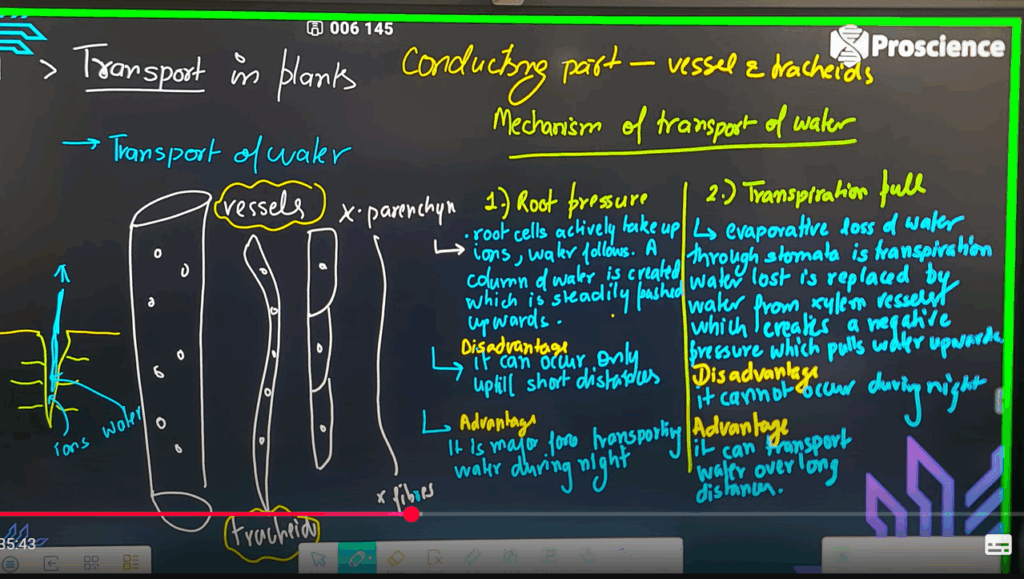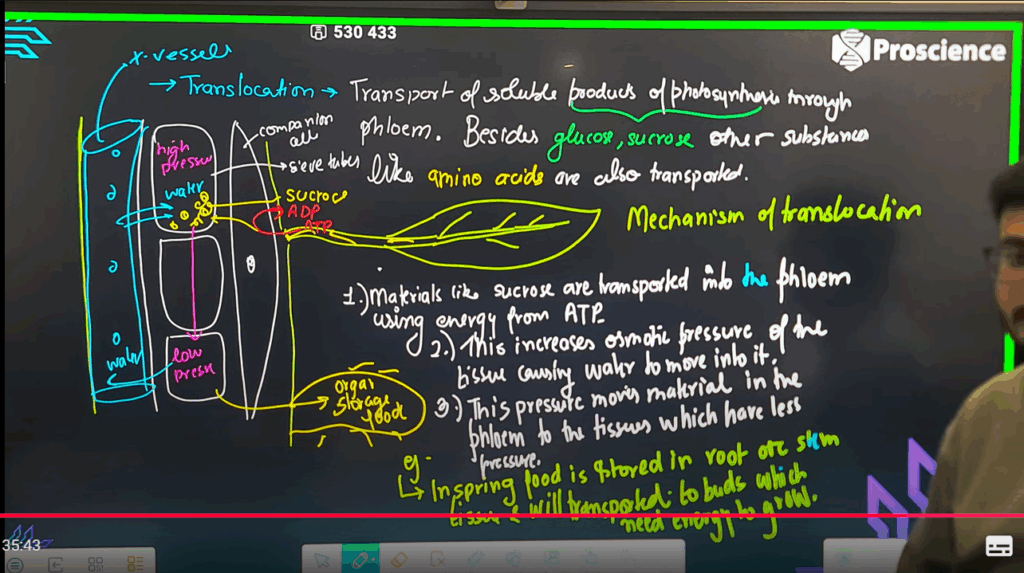VIDEOS
NOTES


ASSIGNMENT
Section A: Multiple Choice Questions (1 mark each)
- The main tissues involved in the transport of water and minerals in plants are:
a) Phloem
b) Xylem
c) Parenchyma
d) Collenchyma - Transpiration pull helps in:
a) Photosynthesis
b) Transport of food
c) Upward movement of water
d) Respiration in leaves - Which tissue is responsible for translocation of food in plants?
a) Xylem
b) Cambium
c) Phloem
d) Meristem - The process of loss of water in the form of vapour from aerial parts of the plant is called:
a) Translocation
b) Transpiration
c) Transportation
d) Photosynthesis - In the process of translocation, food is moved:
a) Only upward
b) Only downward
c) In both directions
d) In random directions
Section B: Assertion and Reasoning (1 mark each)
Choose the correct option:
a) Both A and R are true and R is the correct explanation of A
b) Both A and R are true but R is not the correct explanation of A
c) A is true but R is false
d) A is false but R is true
- Assertion (A): Phloem transports sucrose from leaves to other parts of plant.
Reason (R): Translocation in phloem uses energy. - Assertion (A): Xylem transport is bidirectional.
Reason (R): Water is needed in leaves as well as roots.
Section C: One-Word Answer Questions (1 mark each)
- What are the conducting tissues in plants?
- What is the name of the process responsible for pulling water upward through xylem?
- What is the energy source used in translocation?
Section D: Short Answer Questions (2 marks each)
- State any two differences between xylem and phloem.
- Define translocation. Mention one direction and one substance transported during this process.
Section E: Long Answer Questions (3 marks each)
- Explain the transport of water in plants with reference to transpiration pull and root pressure.
- Describe the mechanism of translocation in phloem, including the role of ATP and osmotic pressure.
KEY
Section A: Multiple Choice Questions
- b) Xylem
- c) Upward movement of water
- c) Phloem
- b) Transpiration
- c) In both directions
Section B: Assertion and Reasoning
- a) Both A and R are true and R is the correct explanation
- d) A is false but R is true
(Xylem transport is unidirectional — from roots to leaves)
Section C: One-Word Answer Questions
- Xylem and Phloem
- Transpiration pull
- ATP
Section D: Short Answer Questions
- Xylem transports water and minerals; Phloem transports food.
- Xylem transport is unidirectional; Phloem transport is bidirectional.
Translocation is the movement of food (mainly sucrose) from leaves to other parts of the plant.
Direction: Both upward and downward
Substance: Sucrose/Glucose
Section E: Long Answer Questions
Water is absorbed by root hairs and moves through xylem.
- Root pressure pushes water up a little.
- Transpiration pull due to evaporation of water from stomata creates a suction force that pulls water upward through xylem vessels.
This movement is unidirectional from roots to leaves.
Translocation in phloem involves:
- Sugar is loaded into phloem using ATP (energy).
- This increases osmotic pressure and water enters from xylem, creating a pressure flow.
- The food moves to the sink (e.g., roots, fruits), where sugar is unloaded, and water returns to xylem.
Thus, phloem transport is energy-dependent and bidirectional.
